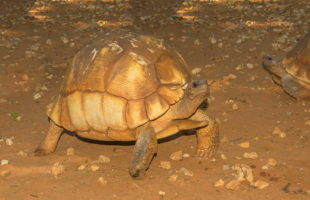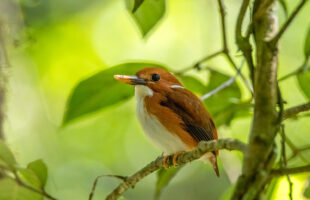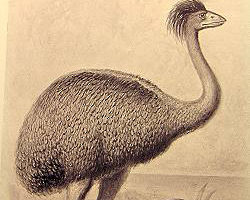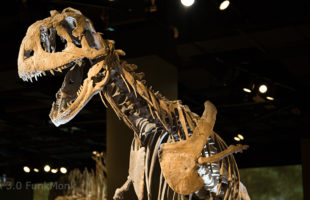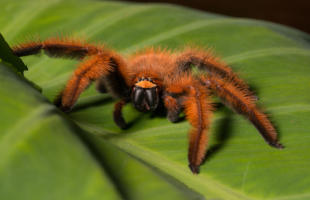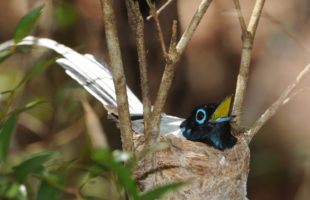An arched, golden shell, relatively long legs and alert, black, shining eyes: That is how the most precious tortoise on Earth looks like. It comes from Madagascar and is named ploughshare tortoise (Astrochelys yniphora) due to the large bony appendage on its breast shell. It serves males to turn over contrahents or females during mating season. And this is quite …
LesenThe fruit gourmets: Black-and-white Ruffed Lemurs
Many people know them from zoos and animal parks: Black-and-white ruffed lemurs (Varecia variegata). Besides Red Ruffed Lemurs and the Indri, they belong to the largest lemurs with a head-torso length of 40 to 60 cm, an additional 60 cm added for the tail. Weights of 3 to 4 kg are the average. Black-and-white ruffed lemurs exclusively live in the …
LesenSmall but a kingfisher: The Madagascar pygmy kingfisher
Kingfishers inhabit many parts of the world. But Madagascar has, additional to the usual kingfisher with its blue blaze of color, another extraordinary variant: The Madagascar pygmy-kingfisher (Corythornis madagascariensis). It bears its name rightly: The pygmy-kingfisher is only 13 cm in size and weighs only 20 grams. A real lightweight! This species also differs from its “big brother” in color: …
LesenThe sky blue reed frog
An especially pretty frog is the blue reed frog (Heterixalus madagascariensis) or Madagascar reed frog: There are yellow and sky blue variations, with yellow or orange arms, legs, hands and feet. In the sun, they often become almost white. Literature mentioned the sky blue frog for the first time in 1841: The French zoologist André Duméril and his assistant, Gabriel …
LesenThe giant sloth lemur
Just 500 or 1000 years ago – in the history of the earth, that’s just the blink of an eye – countless giant animals lived on Madagascar. Among them were the famous elephant birds, a giant tortoise, and a creature you would never expect to find in Africa: a giant sloth. Sloths, as we know them today, are only found …
LesenThe life of elephant birds
Before the arrival of humans, Madagascar was home to animal giants that went extinct by and by with the existence of humans on the island: A giant lemur has lived in Madagascar, besides him a gigantic eagle, an oversized Fossa and of course, one of the largest birds that have ever existed on Earth. Actually, there was not only one …
LesenThe dinosaurs of Mahajanga
In 2003, news of a dinosaur find in Madagascar went around the world: In an archaeological site about 30 km away from Mahajanga (French Majunga) in the west of the country, scientists had found the large, almost fully preserved skeleton of a flesh-eating dinosaur. Similar to the famous Tyrannosaurus rex, it was a dinosaur that walked on its feet with …
LesenHorror in the jungle: Megaloremmius leo
It will surely frighten you when you discover it for the first time: Megaloremmius leo, one of the few large spiders in Madagascar. Eight long legs, a thick, clumsy body, bright red hair on a black ground. Although it looks like a tarantula, it is not even related to them. Megaloremmius leo belongs to a family of spiders that are …
LesenMadagascar’s rarest bird of prey
Mighty dark brown wings, a sharp beak and claws that easily spear through a fish: These are the characteristis of one of the rarest birds of prey in the world. It occurs only – how could it be otherwise – on the eighth continent. We are talking about the Madagascar fish eagle (Icthyophaga vociferoides), Madagascar’s majestic largest bird of prey. …
LesenDer Paradiesschnäpper
Klein, aber oho! Der Madagaskar-Paradiesschnäpper (Terpsiphone mutata) ist sicherlich einer der schönsten Vögel der Insel, obwohl das Fliegengewicht gerade mal 12 g schwer wird – das ist gerade mal so viel wie ein Esslöffel voll Reis. Er gehört zur Familie der Monarchen und ist ein Singvogel. Ihn kann man überall auf der Insel beobachten, von Dornwäldern bis Regenwälder besiedelt er …
Lesen MADAMAGAZINE Your Magazine about Madagascar
MADAMAGAZINE Your Magazine about Madagascar
